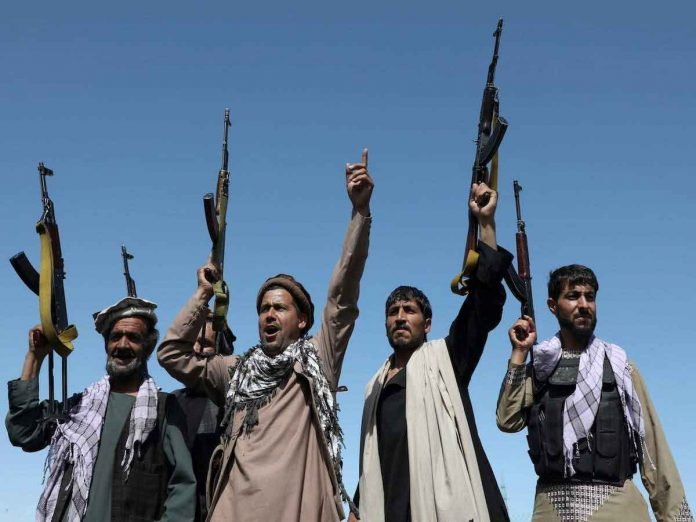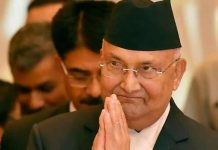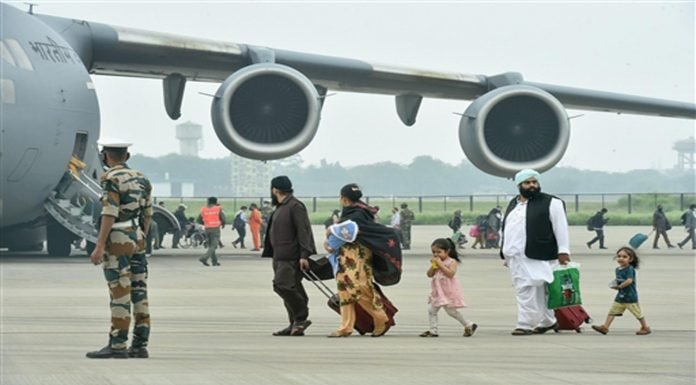
From Soviet Union to Taliban- why is capturing Panjshir so difficult?- Several thousand anti-Taliban fighters are reported to have gathered to fight against the Taliban in a remote valley with a narrow entrance, about 30 miles from the Afghan capital, Kabul. This is not the first time in the country’s turbulent recent history that the dramatic and impressive Panjshir Valley has emerged as a flashpoint. It has been a stronghold of opponents against the Soviet military in the 1980s and the Taliban in the 90s.
The National Resistance Front of Afghanistan (NRF) present there has again reminded the world of the power of this valley.
Ali Nazari, the NRF’s head of foreign affairs, told the BBC: “Despite their might, the Russian Red Army was unable to defeat us, and 25 years ago the Taliban too. They all tried to capture the valley but were unsuccessful. They were put here. suffered a crushing defeat.”
Geography of Panjshir
The long, deep, and dusty valley extends for some 75 miles (120 km) from southwest to northeast, north of the capital, Kabul. Surrounding it are the peaks of mountains about 9,800 feet (3,000 m) above the valley floor. These mountains act as a natural protective shield for the people living there.
There is only one narrow road in this valley which winds its way between large rocks and the winding Panjshir river.
Shakib Sharifi, who lived in Afghanistan before the Taliban took over, spent his childhood in the Panjshir Valley. “The whole area has a mythical aspect to it. It’s not just a valley. When you enter, there are at least 21 more sub-valleys intertwined,” he explains.
At the other end of the main valley is a 4,430 m (14,534 ft) long trail leading to the Anjuman Pass. It reaches further east in the mountains of Hindukush. Both the armies of Alexander the Great and Timurlang passed through this route.
“In history, the Panjshir Valley was also known for its semi-precious gems,” says Elizabeth Leek, associate professor of international history at the University of Leeds.
Today there are hydroelectric dams and a wind farm in the Panjshir valley. The US helped build a radio tower along its roads to receive signals from Kabul. The former US airbase of Bagram, built by Soviet Russia in the 1950s, is only a short distance from the mouth of the valley.
Brave Fighters of Panjshir
An estimated 1.5 to 2 lakh people live in the Panjshir Valley. Most of the people here speak ‘Dari’ language. This language of Tajik origin is one of the main languages of Afghanistan.
Tajiks account for about a quarter of the country’s 38 million population. However, Panjshiri does not look to Tajikistan, one of Afghanistan’s northern neighbours. Instead they have their own local identity.
Shakib Sharifi, who until recently was Director General of Planning in the Afghan Ministry of Agriculture, describes the Panjshiris as brave. They say they are ‘probably the bravest people in Afghanistan’. He says the locals are uncomfortable with the Taliban and have “a positive aggression”. Historic victories against Britain, the Soviet Union and the Taliban have ‘enthused the people further’.
province status
After the defeat of the Taliban in 2001, the Panjshir Valley was elevated from a district to the status of a province. It is one of the smallest provinces of Afghanistan.
“The decision to make it a province was controversial,” says Dr Antonio Giustozzi, a senior fellow at the Royal United Services Institute (RUSI). They say that in the early 2000s, Panjshiri fighters had a lot of power. He had helped in the capture of Kabul and thereafter became the ‘number one stakeholder’.
Panjshiri leaders were given prominent positions in the government and the army. The valley was given autonomy. It was the only province in the country where its governors were made, whereas in other provinces, local people could not be made governors.
“Governors are generally expected to be more loyal to the government than the local population,” says Dr. Giustozzi. But Panjshir was different.




































